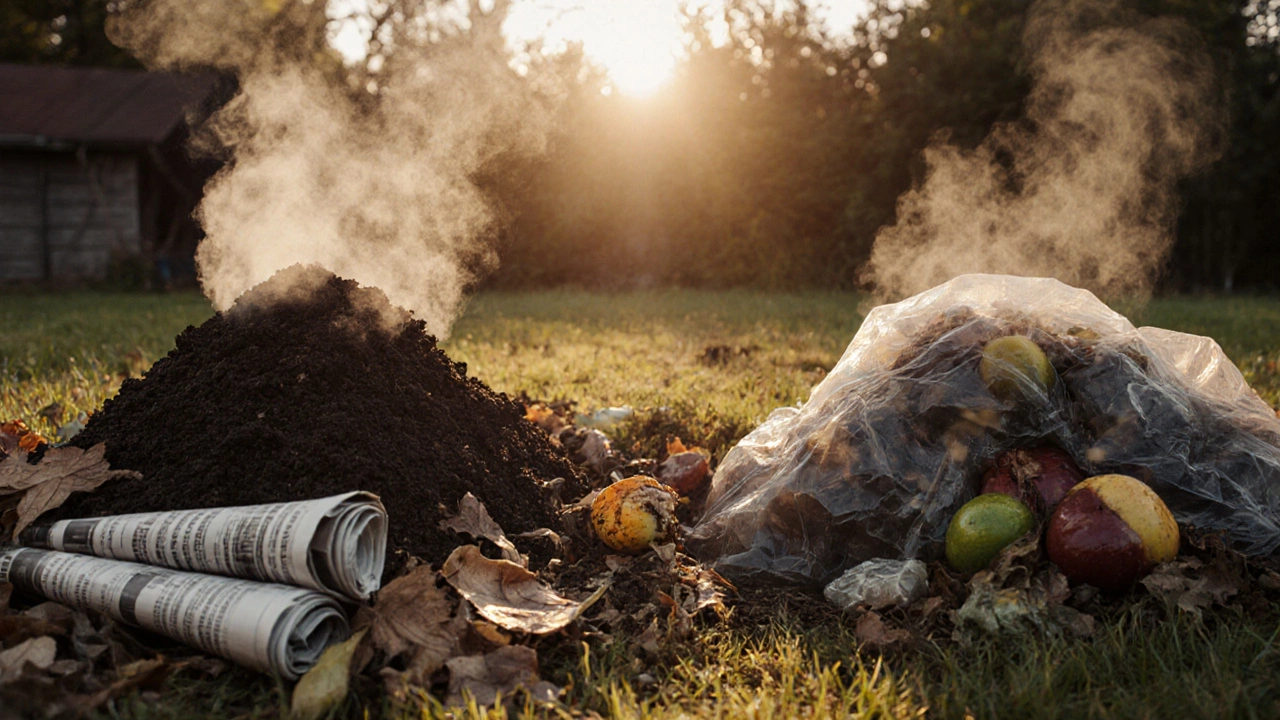Discover how to make the best homemade compost with simple recipes, step‑by‑step guides, and troubleshooting tips for faster, odor‑free results.
C/N Ratio: What It Is and Why It Matters for Your Compost and Soil
When you’re making compost, the C/N ratio, the balance between carbon-rich materials and nitrogen-rich materials in organic matter. Also known as carbon nitrogen ratio, it’s the silent driver behind how fast your pile heats up, smells, and turns into rich soil. If the ratio’s off, your compost stalls, smells bad, or doesn’t break down at all. It’s not magic—it’s chemistry. And it’s the same chemistry that affects your garden soil, whether you’re growing tomatoes on a balcony or vegetables in a backyard plot in India.
Think of carbon as the fuel and nitrogen as the engine. Browns like dry leaves, straw, or shredded paper are high in carbon. Greens like vegetable scraps, grass clippings, or coffee grounds are high in nitrogen. Too much carbon? Your pile sits there like a damp towel—slow, cold, and silent. Too much nitrogen? It turns into a stinky, slimy mess that attracts flies. The sweet spot? Around 25 to 30 parts carbon to 1 part nitrogen. That’s what fast, hot, odor-free compost looks like. And once it’s done, that finished compost doesn’t just feed plants—it rebuilds your soil structure, holds water better, and helps roots breathe. This is why gardeners in Pune, Bangalore, or Delhi who get the C/N ratio right see stronger plants with fewer pests and less need for chemical fertilizers.
The same principle shows up in how you manage your garden soil. Adding raw manure without letting it break down first? That’s like dumping pure nitrogen into your soil—it can burn roots. Mixing in sawdust without adding nitrogen? That’s like stealing nitrogen from your plants to feed the microbes breaking it down. Both mistakes happen because people ignore the C/N ratio. But when you layer your compost with the right mix of browns and greens, you’re not just making fertilizer—you’re building a living system that works with nature, not against it. And that’s exactly what the posts in this collection show: real ways Indian gardeners are using the C/N ratio to fix dense soil, avoid compost failures, and grow more with less.
Below, you’ll find practical guides from people who’ve been there—fixing clogged compost piles, choosing the right materials for Indian climates, and turning kitchen waste into gold. No theory without action. Just clear steps, real results, and the one number that changes everything: the C/N ratio.
